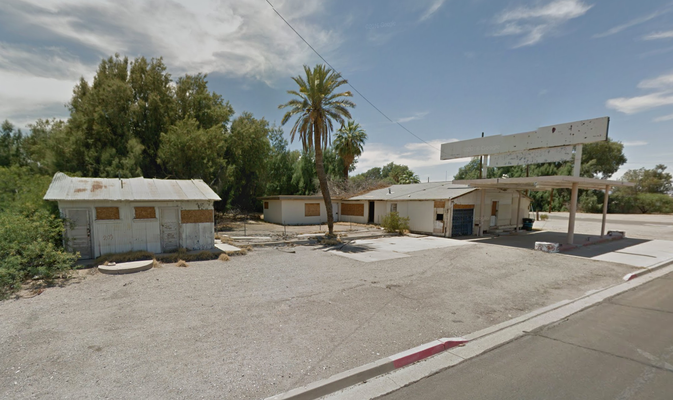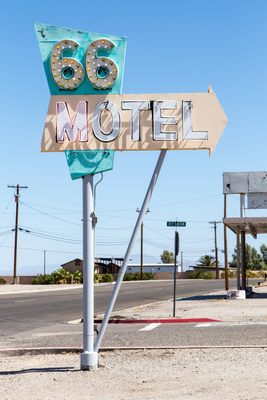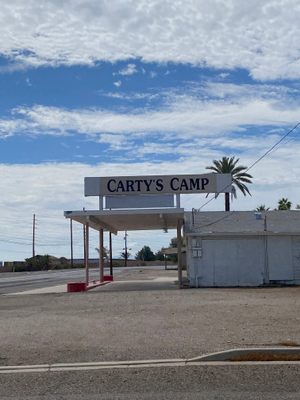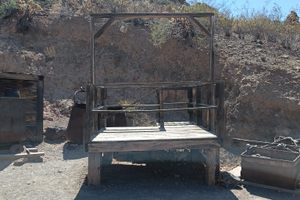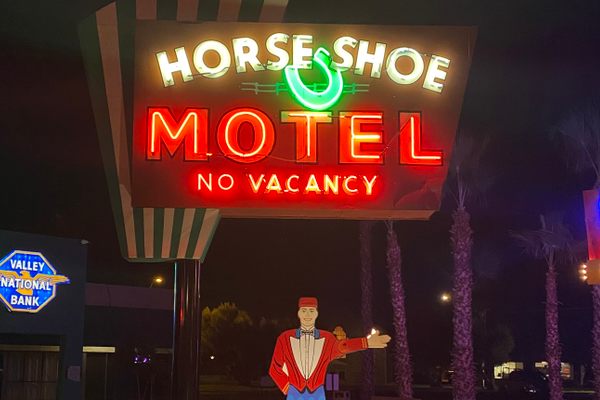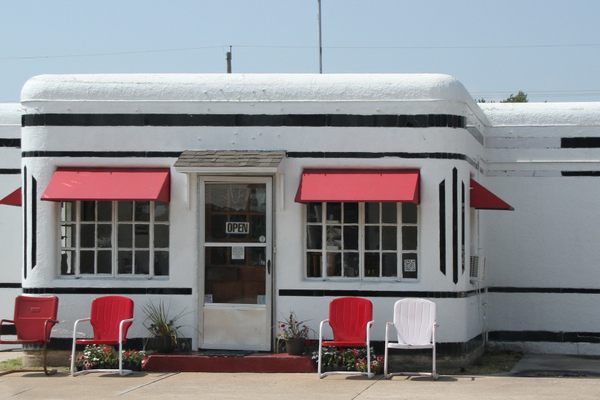About
Before it became Route 66, the National Trails Highway brought many travelers through Needles, California on the road out west. To provide accommodation for these new passersby, locals William Carty and Dick Mansker built “Carty’s Camp”, a 28-cabin tourist town, in March of 1923.
According to the local newspaper, the “Needles Nugget”, Carty's Camp featured “cabins, shade, a store well stocked with groceries and other goods, an oil station, auto accessories, and an up-to-date lunchroom with five ton ice storage.” Carty’s Camp even makes an appearance in the classic film, The Grapes of Wrath, when the Joads pass it by on the Nevada-California border (as can be seen here).
As the 1940s came around, Route 66 was used more and more. Many well-off motorists decided to stay in roadside motels as opposed to cabins built for so-called “tin-can tourists.” In 1947, the 66 Motel, complete with kitchenettes, air conditioning, and a classic neon sign was built just yards away from Carty’s Camp. As the motel’s popularity grew, that of Carty’s Camp shrunk.
From its opening in 1947, the 66 Motel’s vintage neon sign drew in a steady supply of customers—that is, until 1970, when Interstate 40 bypassed the Old Route 66 in Needles. In the words of the owner, “this motel has a lot of potential, but what it boiled down to is that Mama-and-Papa businesses in this country are dead, dead, dead.”
Nowadays, neither the 66 Motel nor Carty’s Camp house tourists for the night. The original six rooms inside the 66 Motel are now used for monthly rentals, and while the classic sign has been given a $2,000 repair, the original cabins and gas station of Carty’s Camp have been left to decay and rust. As drivers pass the derelict Carty’s Camp and the adjacent 66 Motel on the Old Route 66, they are reminded of the damage done by replacing the old Mother Road with a three-lane highway.
Related Tags
Published
September 2, 2016
